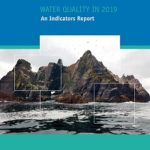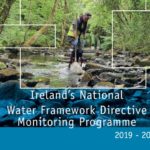15 December 2020: The Environmental Protection Agency (EPA) has today…
Ireland’s National Water Quality Monitoring Programme 2022–2027
The EPA has recently published this document on Ireland’s national Water Framework Directive (WFD) Water Quality Monitoring Programme for the period 2022-2027. The main purpose of the monitoring programme is to provide a coherent and comprehensive national overview of the ecological and chemical status of surface waters (rivers, lakes, transitional and coastal waters) and the quantitative and chemical status of groundwaters.
Information from the WFD Monitoring Programme is used, amongst other things, to track progress towards the achievement of the environmental objectives required by the Water Framework Directive (WFD) and set out in Ireland’s national River Basin Management Plan (RBMP) and to assess change in the quality of Ireland’s aquatic environment over time.
The document provides a description of the type of monitoring to be undertaken:
- surveillance, operational or investigative
- the number of water bodies
- quality elements (biological, physico-chemical, chemical and hydromorphological) to be monitored
- the frequency of this monitoring
The programme is comprised of 2,899 surface and groundwater bodies representing 60 per cent of the total number of water bodies nationally. This includes 2,429 river water bodies, 224 lakes, 80 transitional water bodies, 45 coastal waters, 16 canals and 121 groundwater bodies including 159 sites used to assess groundwater quantitative status.
The public bodies involved in undertaking the programme include the Environmental Protection Agency, Marine Institute, Inland Fisheries Ireland, Waterways Ireland, National Parks and Wildlife Service and local authorities.
Learn more:
Note: detailed information on scheduled WFD monitoring for 2022-2027 will be available shortly on individual waterbody pages on catchments.ie







